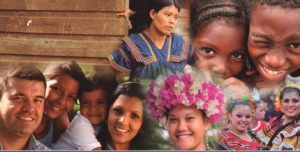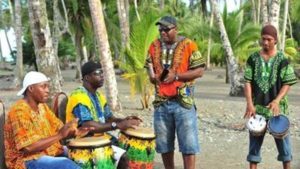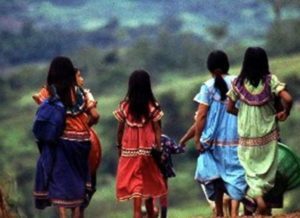
The countries of Latin America are characterized by using Spanish as a language, which is a characteristic that relates them closely to Spain. Within each Hispano-American region, indigenous peoples still live and with them their historical and native language; this coexistence also confers a close relationship between Creole and indigenous Hispanics; Costa Rica enjoys a well-known coexistence, which makes it a nation with linguistic diversity.
The coexistence of Costa Rican Spanish with the aboriginal language, which places this Caribbean nation on the podium of a country with linguistic variety, has greatly enriched Costa Rican Spanish, which has assumed indigenous words to designate material and immaterial elements of the day a day.
Currently, several investigations have determined that in Costa Rica the Amerindian languages are alive since the so-called pre-Columbian era, that is, before the arrival of Columbus on American lands. These languages were known, mainly, as the Chibcha, the otomaguense and the Nahua, coming from the Aztec language. The history of the indigenous language in this Caribbean country has been used for the interpretation of the idiomatic relationship between North and South America.
The above, tells us that this Central American country has been fertile ground for coexistence and development of various languages, considering that since before the ninth century several indigenous Chibchese dialects were developed in the region. That is to say, the linguistic heterogeneity of this land has its beginning in the interaction that existed between the different indigenous languages that made life in the region.

This linguistic diversity, enjoyed by the Costa Rican land before the arrival of Columbus, was distributed in different areas of this Central American country. It is possible to indicate that, in the plains of the north was the Chibcha language Guatuso and branch, this last also well-known like voting or corobicí, whereas in Guanacaste the chibchense was spoken to eat. The Chibcha Boruca dialect was spoken to the south Pacific, while the Cabécar was the language of the central Atlantic region. In the southeast of Costa Rica, in the so-called Canton of Talamanca, the Chibcha Bribri language was spoken.
Today, in Costa Rica the Spanish language, the English, and the Chibcha cohabit; of the latter, four dialects live, which are the Bribri, Cabécar, Gauimí and the Guatuso. Spanish is the dominant language in the region, while the Guaimí and Cabécar language are minor, nevertheless, it is maintained; the Bribri and the Guatuso have declined over time. English is a minority influence in the region. All this denotes a linguistic heterogeneity represented by three languages with their different dialects.
On the other hand, the cohabitation between the indigenous language and the Spanish language in the different regions of Costa Rica produced bilingualism in the aborigines and, consequently, different dialects of Spanish within the Central American country were produced, which represents a linguistic diversity of the Spanish. All this, evidently, makes the Costa Rican land a multicultural country and, simultaneously, of high tourist attraction.

To this, we add the influence of the different dialects of Spanish that come from Mesoamerica, highlighting the influence of Nicaraguan Spanish. And also, dialectal forms coming from South America, specifically, from countries like Panama, Colombia, and Venezuela. This reality, produces another mode of linguistic diversification, because other variations assumed by the Spanish of these nations, conventionally, are coupled to the Costa Rican Spanish.
This linguistic diversity described gives the Costa Rican nation a significant sociocultural wealth. Because it represents a heritage that allows interpreting indigenous society and Amerindian antiquity. It also serves as a basis for understanding Costa Rican society, in terms of customs, food standards, words, and expressions, among others, that were assumed by Costa Ricans over time.
The Costa Rican linguistic variety is a fruitful ground for the indigenistas and the linguists because in it the relationship of Mesoamerica and South America with Central America is reflected. It is possible to affirm that, Costa Rica represents a significant linguistic nucleus for the development of an exhaustive study of the interaction and dynamics of the development of the Spanish and indigenous language, and of the influence of the Anglo-Saxon in Hispanic-American lands.

Those Spanish-Americans or Peninsulares who wish to visit the Central American country would benefit from knowing the linguistic diversity referred to, in order to arrange the equivalent Latin words with their Castilian dialect that allow a flowing and comprehensible communication within the Costa Rican region. Similarly, it would be advantageous for those who have a mother tongue other than Spanish.
Costa Rica is a nation of linguistic diversity, which in turn makes it a multicultural nation. This Costa Rican context tells us that this wonderful Central American country does not make exceptions, but welcomes people of any ethnicity or nation.
